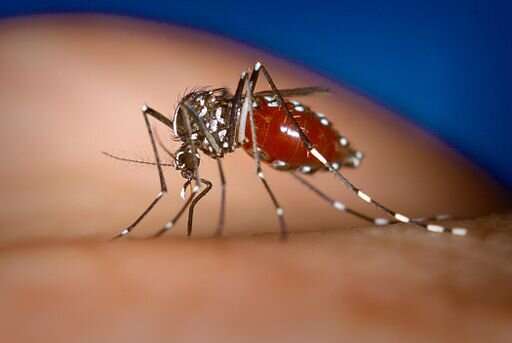Genes tell the story of how the Asian tiger mosquito spread

Over the last 40 years, the Asian tiger mosquito, Aedes albopictus, has invaded every continent thanks to the transportation of its eggs via human trade and transportation. Researchers reporting in PLOS Neglected Tropical Diseases have now used the genomes of the mosquitos to track the history of the invasion and expansion of the species through Albania, Italy, and Greece
Ae. albopictus is native to Southeast Asia and was first recorded outside this area, in Albania, in 1979. It rapidly spread throughout Europe, the United States, Latin America, and Africa. This worldwide invasion was fostered by human activities including the transportation of desiccated eggs by global and local used tire trade. The widespread presence of this aggressive, day-rime biting mosquito in urban habitats represents an increasing public health risk.
In the new work, research groups coordinated by della Torre Alessandra of the University of Rome and Caccone Adalgisa from Yale University studied Ae. albopicus samples collected from ovitraps between May and October 2016 in nine sites across Italy, one in Ablania, and one in Greece. At least five ovitraps were used in each site, and after the eggs were collected, they were allowed to hatch and grow into adults. DNA was then extracted and sequenced.
The genetic data revealed that the expansion of the mosquito occurred thanks to multiple independent— and likely ongoing— invasions from both native and previously invaded areas. The researchers put together a complex story of genetic drift, isolation of some populations, adaptation to local environments, and range expansion. Overall, the results are consistent with a major role of human activities in the expansion of Ae. albopictus.
"Identifying the main source populations implicated in recurrent invasions, as well as main routes and means of passive dispersal, is not only an interesting exercise to better characterize one of the most successful animal invasions in history but may also contribute to understand, and possibly prevent, epidemiologically relevant processes, such as spreading of insecticide resistance," the researchers say.
More information: Pichler V, Kotsakiozi P, Caputo B, Serini P, Caccone A, et al. (2019) Complex interplay of evolutionary forces shaping population genomic structure of invasive Aedes albopictus in southern Europe. PLOS Neglected Tropical Diseases 13(8): e0007554. doi.org/10.1371/journal.pntd.0007554




















